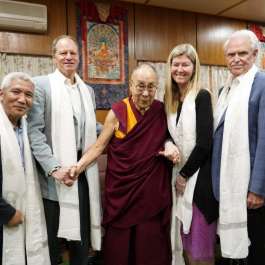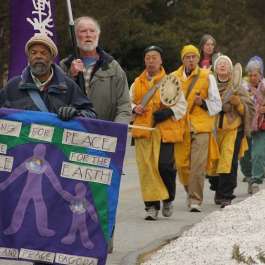As it turns out, they were wrong—all those people who said you can’t change the past. And so were you if you believed them.
William Faulkner’s famous assertion that “the past is never dead; it’s not even past”?
Wrong.
F. Scott Fitzgerald’s equally downbeat observation that “we beat on, boats against the current, borne back ceaselessly into the past”?
Wrong.
We can change the past, but paradoxically only if we relinquish our desire to change the past and focus instead on changing the way we remember the past.
Sound dangerous? Deluded? Immoral?
It isn’t.
On the contrary, it’s one of the greatest gestures of kindness we can offer ourselves.
So how do we go about it?
“It’s simple,” as Jon Kabat-Zinn says. “But not easy.”
Let’s take some dramatic examples. That way, it will become obvious that the same basic methodology also works for much lighter and less emotionally charged memories.

Regarding Henry
A seven-year-old boy who we’ll call Henry was in the backseat of a green station wagon singing “Jingle Bells” with his mom one snowy evening a few days before Christmas. As they left a small Midwestern town decorated in colorful Christmas lights, they made their way onto a rural highway. Speeding through the dark country night, singing in unison, Henry’s mom noticed a white truck on the horizon, traveling toward them in the opposite lane. As it approached, it hit a patch of ice and fishtailed out of control into their lane. Henry’s mom slammed on the brakes but it was too late: the two vehicles smashed into one another sending the station wagon spinning like a top into the opposite lane. When it finally screeched to a stop, another, much larger truck came roaring inexorably down upon them, killing Henry’s mother but not Henry.
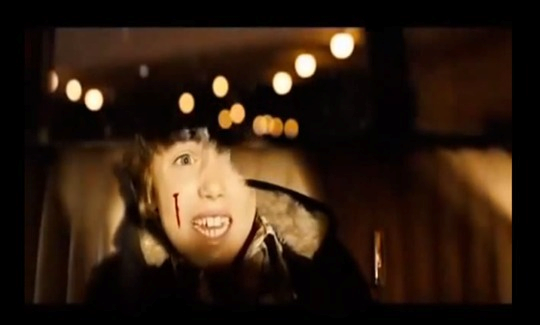
Responding to difficult memories with passive mindfulness
What do we do with memories like these, or the much less traumatic ones that occasionally yank our attention back into the past?
In most Buddhist traditions, as well as the many mindfulness-based psychotherapies they have inspired, such as acceptance and commitment therapy (ACT), dialectical behavioral therapy (DBT), compassion-focused therapy (CFT), and others, we are encouraged to notice all of the sensations, emotions, and thoughts that comprise our difficult memories, drop back into a non-identified “observing self,” and simply allow our experiences with an attitude of acceptance and compassion before returning to the present moment and continuing to act in accord with our freely chosen values.*
For instance, the authors of the popular ACT book Finding Life Beyond Trauma encourage their readers to respond to traumatic memories by picturing their reactions as leaves on a stream, focus on labeling the process rather than the contents of their memories (“That’s a thought,” “That’s a feeling,” “That’s an evaluation,” “That’s a sensation”), and compassionately accept all of their inner experiences without trying to avoid, suppress, or control them, before finally coming back to the breath. (Follete and Pistorello 2007)
Similarly, Marsha Linehan, pioneer of the Zen-based psychotherapeutic modality DBT, invites people to respond to painful memories as a lawn responds to the weather, simply allowing the sunshine, the rain, and the snow to fall on it without trying to dodge any of it. (Linehan 1993)
But a perennial quandary in both psychotherapy and spirituality is whether we should simply accept the inevitable pain of the past with a spirit of willingness or try to actually transform and heal our difficult memories so that they no longer bother us. In other words, do we set the bar at acceptance or do we raise the level to transformation?
Richard Schwartz, pioneer of the Internal Family Systems (IFS) model of psychotherapy, is probably the person who has been asking this question the loudest over the last few years. Like most people in the helping professions, Schwartz has a deep respect for the healing power of the mindfulness-based traditions.
Familiar as he is with most of the evidence-based mindfulness models as well as many of the ground-breaking mindfulness-based contemplative approaches (as exemplified, for instance, in the extraordinary volume Mindfulness-Oriented Interventions for Trauma) he states the obvious: “Clearly, learning to mindfully witness experiences helps clients a great deal, even those with diagnoses previously considered intractable.” (Schwartz 2013, 811) But because Schwartz is confident that we can do more, much much more, he dares to ask: “What if it were possible to transform this inner drama, rather than just keep it at arm’s length by taking mindfulness one step further?” (Schwartz 2013, 812)

From opencenter.org
In his bestselling book The Body Keeps the Score, Bessel van der Kolk, one of the world’s leading figures in the field of trauma recovery, refers to IFS as a form of “active mindfulness.” (van der Kolk 2015, 285) “In this model of treatment,” he notes, “the [mindful] Self doesn’t only witness or passively observe, as in some meditation traditions; it has an active leadership role.” (van der Kolk 2015, 285) In other words, rather than remaining a mere passive observer, van der Kolk notes that in IFS the mindful Self can “help reorganize the inner system and communicate with the parts in ways that help those parts trust that there is someone inside who can handle things.” (van der Kolk 2015, 285)
Using active mindfulness to transform the experience of the past
The “active mindfulness” response to difficult memories is beautifully illustrated by what happened just a bit later in Henry’s story. After he screamed desperately for his mother at the moment of impact, something very unusual happened. A dark-haired, 30-something man who bore a vague resemblance to him suddenly appeared in the memory. As Henry reached helplessly for his mom, this man lovingly restrained him, turned him around and explained to him in a firm but reassuring voice, “There’s nothing you can do. There’s nothing you can do.”
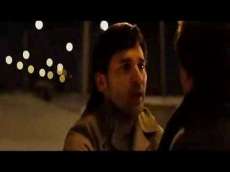
The man then wrapped the shivering boy in a warm woollen blanket, dropped down to his eye level and explained to him: “I’m you, Henry. Understand? When you’re grown-up. We’re the same person.” The boy looked back, bewildered. After briefly acknowledging the boy’s confusion, the adult Henry let his voice drop down a register and explained to him in a soothing, confident tone: “You don’t need to be afraid, Henry. You’re going to be okay. I promise.” He then clasped the young boy warmly by the shoulders, gave him a kiss on the forehead and disappeared into the night.
The older Henry did what any one of us can do, with a bit of information and the presence of another supportive mammal. He summoned some basic, adult capacities—curiosity, compassion, courage—that we point to with the word “mindfulness” and then he entered into a difficult childhood memory. But rather than merely adopting what Schwartz calls “the passive observer form of mindfulness” (Schwartz 2013, 808) and accepting the unpleasant memory, he became active and, in a process that’s alternatively referred to as “rescripting” or “reparenting” in IFS, interacted with his younger self, offering him the warmth, reassurance and information he had clearly longed for but did not receive as a boy. In this way, he essentially became his own mother and father.
Did this change the past? In one sense, no. The historical facts of the situation remain the same. Henry’s mom still died in the terrible car accident while Henry survived with the painful memory of her death seared into his young mind.
But in another sense, yes, it did. While the rescripting process did not change what Henry experienced, it did—and this is crucial—change the effect that the experience had on him. After all, it isn’t our experiences themselves that determine how we feel and behave; it’s the residue that these experiences leave in our memories. As Jay Early writes in his book Self-Therapy, “While you can’t change the past, you can change the way the past is codified in your mind.” (Earley 2015, 235) In other words, rescripting a memory doesn’t change or make you forget what actually happened. However, the process does, as Richard Schwartz puts it, “change the client’s currently lived experience of the past.” (Schwartz 2019, 162) Why? Because after the process of rescripting is complete, “the emotional valence of [the] memory is different.” (Schwartz 2019, 161)
Art is a lie that tells the truth
As you may or may not have guessed, the vignette about Henry included above is actually taken directly from the film The Time Traveler’s Wife (2009).
“Ah-hah!” you exclaim. “So this is fiction! And not just fiction, but science-fiction!”
Yes, but what if Picasso was right that “art is a lie that makes us realize truth”? (Picasso 1923) In other words, what if fiction writers sometimes use fiction to convey processes that are, in fact, the stuff of non-fiction?
I once had a client—let’s call him Miguel—who came to see me in his mid-30s after he had dropped nearly 30 courses during an electrical engineering degree he had been trying without success to complete for almost eight years. Even when he had been passing a course, if he thought he was doing “too poorly” in the class a part of him became convinced that he would be perceived as a “fuck-up” and prompted him to drop course after course after course. As time passed, it became clear that some traumatic school-related memories from his childhood were driving his self-sabotaging behavior.
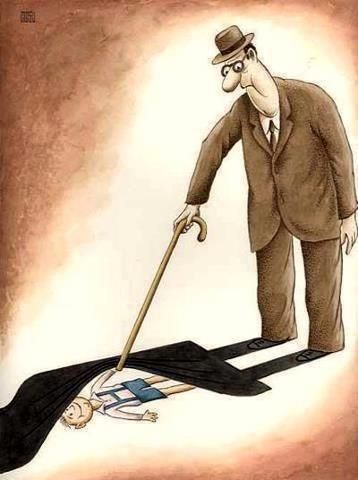
As a boy, growing up in El Salvador, whenever Miguel brought home his school agenda with a note from his teacher saying that he hadn’t been paying attention in class or had received a detention, his father would run him a cold shower and then beat him so badly with a belt that he would bleed. In the middle of winter, his dad would sometimes lock him outside in the backyard wearing only his boxers. On some of these occasions, after he had locked Miguel outside, his father would feed the dog, but not him. Other times, when his father wasn’t looking, Miguel’s mom would sneak him some food and a blanket via the same little window through which they fed the dog. When Miguel recounted this last detail, he recalled with a sense of tenderness tinged with contempt, how touched he had been that his mom had defied his dad in this way, even though she never made any attempt to protect him from his father’s abuse.
So Miguel and I did something very similar to what Henry does in The Time Traveler’s Wife. With a bit of guidance, he got into a mindful state and then, very gradually, in the guise of his mindful adult self, he entered his traumatic memory and watched with compassion and pity as he was brutally beaten in the shower and then shoved outside in his boxers like a dog.
But rather than just mindfully accepting all of the sensations, feelings, thoughts, and impulses he was experiencing as he witnessed the memory, he became active and made his adult presence felt to his younger self. Then, when the memory was complete, he used his words and his body and his feelings to communicate to his younger self that he saw and understood how bad it was. After his younger self felt fully acknowledged, Miguel asked him if there were any other memories he wanted to show him. There weren’t; not for the time being. So he approached his bruised and cold and hungry boyhood self and asked if there was anything else he could say or do to help him. The boy didn’t skip a beat; it was as though he had been waiting decades to be asked this question. He requested that his adult self remove his older sister and dog from the house and then help him burn the place down with his mother and father trapped inside. And this is exactly what they did.
As intense as this might sound, Schwartz emphasizes that it is not uncommon for victims of abuse to make such requests. “Sometimes,” he writes, “an exile [i.e. a childhood memory] will ask for something violent to happen to a perpetrator (Kill him!).” (Schwartz 2019, 161)While these sorts of requests can certainly make people nervous, Schwartz stresses that he and many other IFS therapists “have learned that following the exile’s wishes leads to a good outcome. After this kind of emotionally corrective rescripting of traumatic moments, the client’s experience of the past seems to change. Although she does not forget what happened, her needs have been validated and the emotional valence of her memory is different.” (Schwartz 2019, 161)
So Miguel watched his house burn to the ground with his parents trapped inside it. Then he called a cab and took his younger self, his sister, and their dog to his grandmother’s house, where he had always felt safe as a child. Here, Miguel dressed his younger self in warm clothes and then asked his grandmother to make them all a delicious meal. Once he felt full and safe and warm, his older adult self asked him if he would be interested in releasing any of the toxic beliefs and feelings that his childhood beatings may have left him with. His younger self nodded solemnly. After locating the primary source of these tensions in his belly, Miguel reached into his younger self’s stomach and pulled out a knot of tension that he called “the fuck-up.” About the size of a peach-pit, it was an amalgamation of the shame, fear and confusion he felt as a result of the abuse. Then he walked back to the burning house, cupping the burden in his hands, and cast it into the flames with his parents’ ashes. As Miguel watched it slowly burn away, a feeling of lightness, peace, and harmony permeated his body. He savoured these feelings, breathing them in deeply as he invited in a renewed sense of his own intelligence, goodness, and resilience.

Correlates to rescripting in neuroscience
Some astonishing recent findings in the field of neuroscience called memory reconsolidation likely explain why this kind of rescripting process can be so effective. Prior to the groundbreaking work of McGill neuroscientist Karim Nader, the old view of memory was that it basically functioned like opening a book in a library: if you took a book off the shelf, read a page, and then put it back, it was believed that the contents would remain unaltered when you removed the same book and read the same page years later. As Boston University neuroscientist Steve Ramirez explains: “The underlying dogma was that, when you formed a memory, it was filed away in your brain, and that’s it. You can’t modify it, it just is. It’s just in the brain.” (Bicks and Strachan 2016)
However, as Kelsey Martin, dean of Medicine at UCLA, explains, complex research on memory reconsolidation has radically upended this view: “It’s not this, ‘you have a memory, you encode it and it’s stuck there.’ But instead . . . every time that memory is recalled, it is vulnerable to alteration.” (Bicks and Strachan 2016) The Nobel Prize-winning neuroscientist Eric Kandel puts it this way: “Any time you recall a memory you essentially disrupt it.” (Bicks and Strachan 2016) Returning to the analogy of books in a library, Ramirez explains, “It turns out, memory is not at all, actually, like putting a book away in the library of the brain, but it’s more like bringing up a file on your computer and constantly modifying that file.” (Bicks and Strachan 2016)
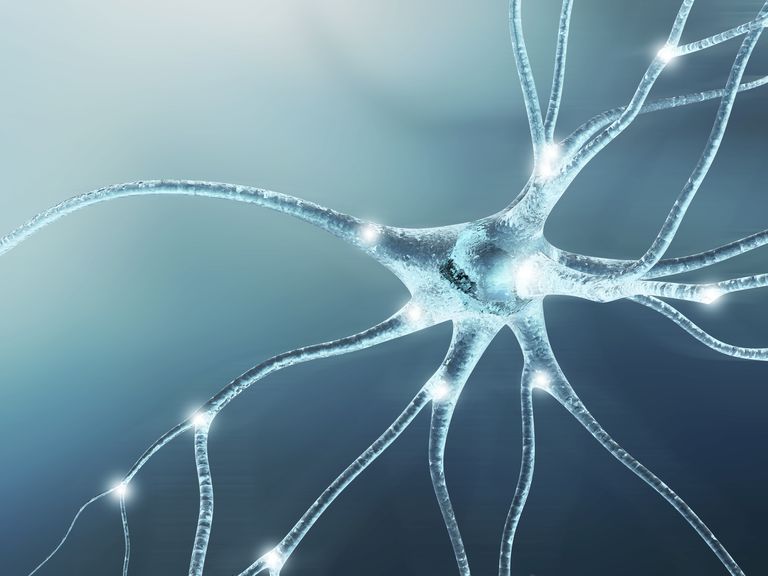
One of the many implications of this research is that if memories are not just consolidated but continually reconsolidated, then they can also be deconslidated. In other words, unhelpful memories can be modified and sapped of their emotional venom. In his book Unlocking the Emotional Brain, Bruce Ecker and his colleagues outline a three-stage process that they believe underlies all effective rescripting processes, including most likely the IFS “active mindfulness” approach outlined above. (Ecker et. al. 2012)
First, in order to edit or rescript a memory, we must “access” and “reactivate” the original emotional learning as “a visceral emotional experience.” (Ecker et al. 2012, 26) This is precisely what Miguel did when he actively re-entered his memory of abuse in the guise of his mindful adult self and compassionately witnessed the awful things that had occurred to him.
Second, while the target memory is reactivated, we must identify what Ecker calls a “mismatch” or “disconfirming” experience that contradicts it. (2012, 28) Ecker stresses that this “antidote” experience must be “living knowledge that is fundamentally incompatible with the model of reality in the target emotional learning such that both cannot possibly be true.” (2012, 29) It is, apparently, this step that unlocks the synapses and renders our memory circuits “labile,” or susceptible to being updated by new learning. (2012, 26) This, it seems, is likely what occurred when Miguel’s boyhood self told his mindful adult self what he could do to help: he identified the “mismatch” experience that would disconfirm his early emotional learning that anything less than academic excellence would mean he was a “fuck up” who deserved to be beaten like a dog.
Finally, in what Ecker calls the “transformation sequence,” before the synapses have relocked, we must enact and sometimes repeat the new learning experience. Although he emphasizes that “the new learning must feel decisively real to the person based on his or her own living experience” and must therefore be “experiential learning as distinct from conceptual, intellectual learning,” (2012, 27) Ecker also stresses that “new experiences that are imaginal can be effective for creating new neural circuits and new responses, because the emotional centers of the subcortex hardly distinguish between perceptions arising externally versus internally.” (2012, 31)
This “transformation sequence” was completed when Miguel liberated himself from the circumstances in which he had been trapped as a child and then completed both the flight and fight responses that had been blocked when he was a boy. Using his imagination, after he finally escaped from his seemingly inescapable predicament and completed his thwarted impulse to retaliate against his parents, Miguel warmed and fed himself in a safe environment before finally returning what W. D. Fairbairn called “the burden of badness” to his parents’ home. While “imaginal,” this “decisively real” and “living knowledge” comprised the mismatch experience that left him feeling not like a weak, powerless “fuck-up” but like a strong, powerful, and intelligent human being. As the well-respected neuroscientist Joseph Ledoux explains, this process, which he refers to as “reconsolidation blockade,” “doesn’t erase the content of your memory, [or] the conscious information about the memory. What it does is it dampens the impact of the memory so that it’s less arousing, less troubling when you remember it later.” (Ledoux 2017).
Active mindfulness in the Buddhist tradition
But what does all of this have to do with Buddhism? A surprising amount, actually. As Richard Schwartz and Flint Sparks point out, the mindful Self in IFS is virtually identical to what, in many traditions of Mahayana Buddhism, is called “Buddha-nature.” (Schwartz and Flint 2015)
In other words, in both IFS and most Mahayana traditions, we find the notion that the ever-present and always-already liberated healing agent of the psyche comes built into us, as it were. Moreover, the IFS observation that the psyche is not unitary or singular but instead consists of many different parts or sub-personalities is almost identical to the increasingly influential “modular theory of mind” that Buddhist evolutionary pscyhologists such as Robert Wright appeal to in books like Why Buddhism is True to explain the phenomenon of not-Self. (Wright 2018, 75–104)
Finally, the rescripting process that we find in IFS is strikingly similar to the practice of active mindfulness advocated by some Mahayana teachers. Here, for instance, is a passage from the Vietnamese Buddhist monk Thich Nhat Hahn’s book Reconciliation:
Sometimes the wounded child in us needs all our attention. That little child might emerge from the depth of your consciousness and ask you for your attention. If you are mindful, you will hear her or his voice calling for help. At that moment, instead of paying attention to whatever is in front of you, go back and tenderly embrace the wounded child. You can talk directly to the child with the language of love, saying, ‘In the past I left you alone; I went away from you. Now I’m very sorry, I’m going to embrace you.’ You can say, ‘Darling I’m here for you. I will take good care of you. I know that you suffer so much. I’ve been so busy. I’ve neglected you and now I’ve learned a way to come back to you.’ If necessary, you have to cry together with that child. . . . If you do that for a few weeks or a few months, the wounded child in you will experience healing. (Hahn 2010, 3)
* The classic, roughly 2,600-year-old discourses of the Buddha on dependent origination seem to have inspired most of these approaches. To take just one of many examples, in the Samyutta Nikaya 12:65, after making “contact” with the “six sense bases” (i.e. the five-senses, plus the “mental formations” of the mind) “feeling” is said to arise. Taking a painful memory as an example, the implication is that when we “contact” something triggering in our environment or our minds (i.e. the “six sense bases”), the very next thing that happens is we “feel” something. When “feeling” arises, we are instructed to note whether the feelings are pleasant, unpleasant, or neutral. However, if we are unable to simply observe feeling-tones in this non-identified manner but become ensnared by them instead, then desire (for more pleasant feelings) or aversion (toward unpleasant or neutral feelings) arises. This in turn leads to the “craving” to extinguish the unpleasant feeling tone and then “clinging” to this wish. Clinging in turn translates into “becoming,” where we make a self out of the memory and its feeling-tone, considering it “me” and “mine.”
References
Bicks, Michael and Anna Lee Strachan. 2016. Memory Hackers. PBS Nova. https://www.pbs.org/wgbh/nova/video/memory-hackers
Ecker, Bruce, Robin Ticic and Laurel Hulley. 2012. Unlocking the Emotional Brain: Eliminating Symptoms at their Root Using Memory Reconsolidation.
Follette, Victoria, John Briere et. al. 2015. Mindfulness-Oriented Interventions for Trauma: Integrating Contemplative Practices. New York: Guilford Press.
Hahn, Thich Nhat. 2010. Reconciliation: Healing the Inner Child. Berkely: Parallax Press.
Ledoux, Joseph. 2017. “What is Memory Consolidation and Reconsolidation?” https://www.youtube.com/watch?v=JKiV3FNpXhk
Linehan, M. M. 1993. Skills Training Manual for Treating Borderline Personality Disorder. New York: Guilford Press.
Picasso, Pablo. 1923. The Arts: An Illustrated Monthly Magazine Covering All Phases of Ancient and Modern Art. New York.
Schwartz, Richard C. 2013. “Moving From Acceptance Toward Transformation With Internal Family Systems Therapy (IFS).” Journal of Clinical Psychology. Volume 69, Issue 8, August 2013. Pp 805–16.
Schwartz, Richard and Martha Sweezy. 2019. Internal Family Systems Therapy. Second Edition. New York: The Guilford Press.
Van der Kolk, Bessel. 2015. The Body Keeps the Score: Brain, Mind, and Body in the Healing of Trauma. New York: Penguin Books.
Wright, Robert. 2018. Why Buddhism is True: The Science and Philosophy of Meditation and Enlightenment. New York: Simon & Schuster Paperbacks.







